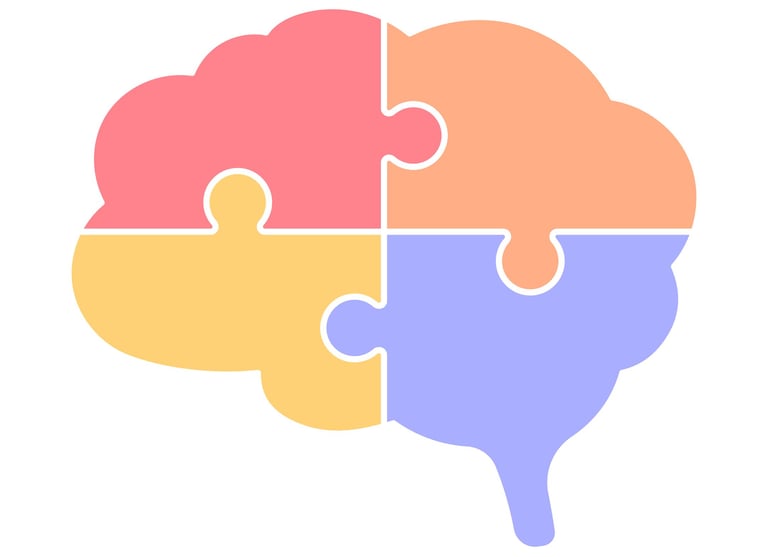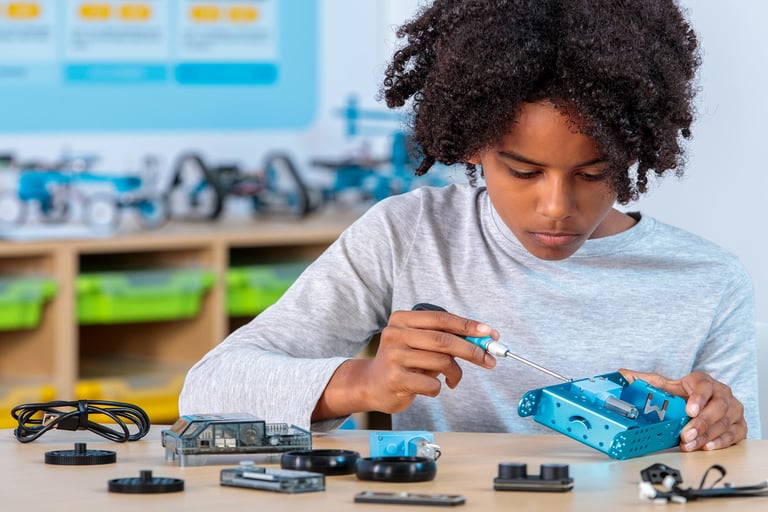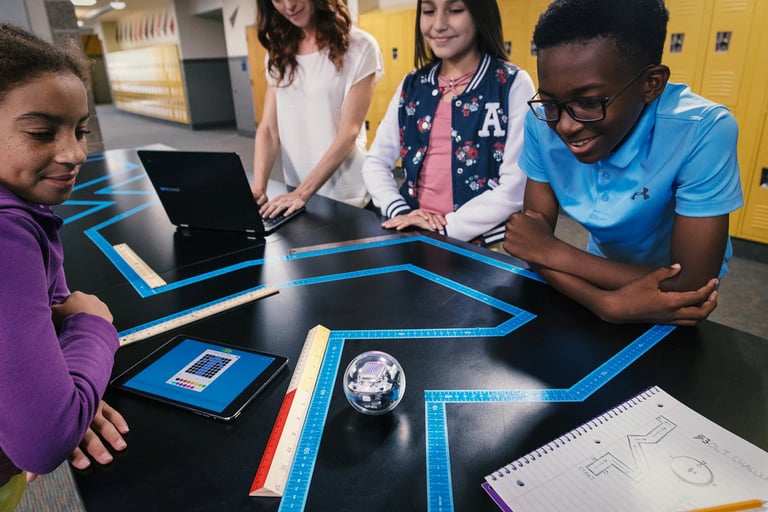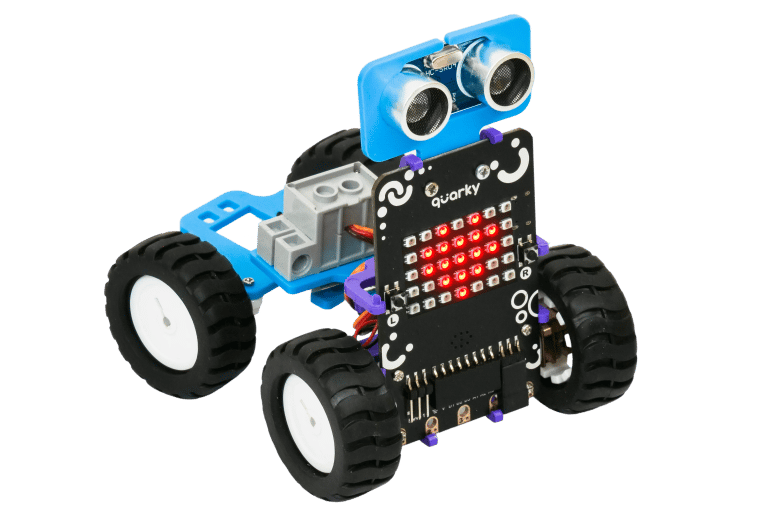As an educator in Oman, you know that some students are quiet and reserved, while others are full of boundless energy. But what about the student who is constantly overwhelmed by classroom noise? Or the child who can't stop fidgeting and seems to need constant movement to focus?
Often, these behaviors are not a matter of choice or discipline. They are the outward expression of an internal "traffic jam" in the brain known as Sensory Processing Disorder (SPD).
This guide is designed to provide you with a deeper understanding of SPD and offer practical, actionable strategies you can use to create a sensory-friendly classroom. By learning to support a child's sensory needs, you can unlock their full potential for learning and engagement.
A Teacher's Guide to Sensory Processing Disorder in Oman
To effectively support a student with SPD, we must look beyond the traditional five senses. Our bodies are constantly taking in information through at least seven key sensory systems. When one or more of these systems are out of sync, it can deeply impact a child's ability to learn and interact with their environment.
Here is a breakdown of each system, what to look for, and strategies you can implement.
1. The Visual System (Sight)
This system processes information that we see, including light, color, and movement.
Look For: A student might be hypersensitive (over-responsive) and squint under normal lights, get distracted by visual clutter, or have difficulty tracking words on a page. A hyposensitive (under-responsive) student might crave bright lights and stare at stimulating objects like ceiling fans.
Classroom Strategies:
Reduce visual clutter on walls and shelves.
Use natural lighting whenever possible and avoid flickering fluorescent lights.
Provide a "visual blocker" or a piece of paper with a cutout window to help students focus on one line of text at a time.
2. The Auditory System (Hearing)
This system processes sounds, helping us distinguish between background noise and important information.
Look For: A hypersensitive student may cover their ears at the sound of the school bell, a fire drill, or even group chatter. A hyposensitive student might not respond to their name being called or may make loud noises themselves to get the auditory input they crave.
Classroom Strategies:
Provide noise-canceling headphones for independent work or loud activities.
Create a "quiet corner" where a student can go to escape overwhelming noise.
Use a calm, steady tone of voice when giving instructions.
3. The Tactile System (Touch)
This system processes information from our skin, including pressure, texture, and temperature.
Look For: A hypersensitive student might avoid messy activities like painting or playing with clay, dislike certain clothing textures, or react negatively to a friendly touch. A hyposensitive student might have a high pain tolerance or constantly touch everything and everyone around them.
Classroom Strategies:
Always ask permission before touching a student.
Provide tools for messy play so the student doesn't have to touch the material directly (e.g., paintbrushes, rollers).
Offer "fidget tools" like stress balls or textured pencils for students who need tactile input to focus.
4. The Olfactory (Smell) & Gustatory (Taste) Systems
These chemical senses are closely linked and can trigger strong emotional and memory responses.
Look For: A hypersensitive student might be distressed by the smell of classroom cleaning supplies, another student's lunch, or scented markers. A hyposensitive student might chew on non-food items like pencils or shirt collars to get intense oral input.
Classroom Strategies:
Maintain a fragrance-free classroom policy.
Allow students who need oral input to chew on safe, appropriate items like chewable jewelry or a water bottle with a bite valve.
Be mindful of smells during snack and lunch times.
5. The Vestibular System (Balance and Movement)
Located in our inner ear, this system tells us where our body is in space, whether we are moving or still, and how fast we are going. It’s our internal GPS for balance.
Look For: A student with a hypersensitive vestibular system might be fearful of playground equipment, get dizzy easily, and avoid activities like spinning or swinging. A hyposensitive student is often the opposite—they crave intense movement, love to spin and swing, can't sit still, and may rock in their chair.
Classroom Strategies:
Allow for flexible seating options like wiggle seats, wobble stools, or standing desks.
Incorporate structured movement breaks into the day (e.g., jumping jacks, wall pushes).
For the movement-craving student, give them jobs that involve walking, like taking a message to the office.
6. The Proprioceptive System (Body Awareness)
This system gets information from our muscles and joints. It tells us where our body parts are and how much force to use without us having to look. It’s what allows you to clap your hands with your eyes closed.
Look For: A student with poor proprioceptive processing might appear clumsy, bump into furniture, use too much force when writing (breaking pencil tips), or give overly forceful hugs. They might also seek deep pressure by crashing into things or wrapping themselves tightly in blankets.
Classroom Strategies:
Incorporate "heavy work" activities, which are very calming and organizing. This includes carrying a stack of books, pushing a cart, stacking chairs, or erasing the whiteboard.
Use weighted lap pads or weighted vests (with guidance from an occupational therapist) to provide calming deep pressure during seated work.
Provide resistance tools, like therapy putty or resistance bands tied around chair legs for students to push against.
Understanding the Seven Sensory Systems
Designing the perfect classroom for students with SPD is about creating a flexible, predictable, and empowering ecosystem. Here are the key elements of this ideal environment.
The Core Philosophy
The classroom is built on three principles: it is Flexible (easily adapted), Predictable (clear routines reduce anxiety), and Empowering (offering students choices and tools to self-regulate).
The Physical Environment: The Foundation of Calm
The overall atmosphere of the room sets the stage for learning. The goal is to reduce unwanted sensory "noise."
Lighting: Prioritize natural light. Use warm-toned bulbs or fluorescent light filters to avoid harsh, flickering light.
Sound: Dampen noise with rugs, soft wall hangings, and felt pads on chair legs. Establish a non-verbal quiet signal instead of a loud bell.
Visuals: Use calm, neutral wall colors and keep the room organized and clutter-free with closed, labeled storage.
Key Zones within the Classroom
Creating specific zones allows students to find the sensory input they need in a structured way.
The Regulation Retreat (Calm-Down Corner): This is a positive, safe space a student can choose to go to when overwhelmed. It should have comfortable seating (a beanbag), calming visuals (a bubble tube), and tools like noise-canceling headphones and a weighted lap pad.
The Active Zone (Movement Space): For students who are under-responsive, a small area with a mini-trampoline or a crash pad allows them to get the intense input they crave in a safe, structured way.
The Focus Nook: Individual study carrels or desks facing a clear wall can provide a "visual cocoon" for students who are easily distracted during focused work.
Sensory-Integrated Furniture and Tools
The furniture itself can be a powerful sensory tool. Flexible seating is key, with options like wobble stools, ball chairs, and standing desks. A classroom "sensory toolkit"—a box of items students can borrow—is also essential. This can include a variety of fidgets, resistance bands, and weighted lap pads.
A Blueprint for the Ideal Sensory-Friendly Classroom
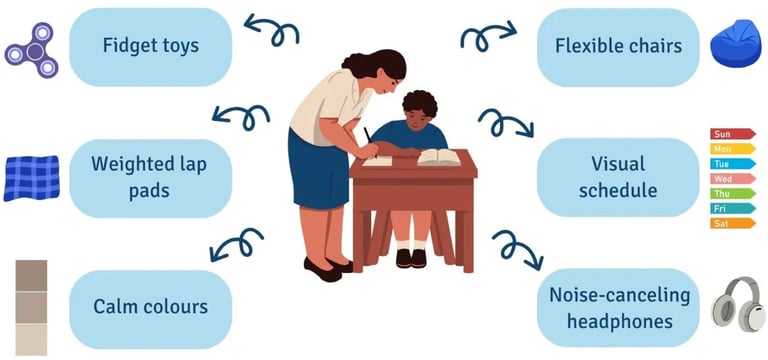

Having a variety of these items available creates a rich classroom "sensory toolkit." This empowers students by giving them the choice to find and use the tools that help their bodies feel calm and their minds feel focused. The image below highlights some of the most effective components of a sensory-friendly classroom.
Suggested Products: Integrating Sensory Support into Learning
While classroom strategies create a supportive environment, the learning tools you use can become a powerful, integrated part of a student's sensory diet. Hands-on STEAM products are particularly effective because they provide purposeful, engaging sensory input that is naturally embedded in the lesson.
Here are some of the best platforms for supporting a wide range of sensory needs.
The Power of the Brick: LEGO® Education
The LEGO® Education system is a gold standard in schools worldwide, and for good reason. The physical act of building with LEGO® bricks is in itself a powerful sensory tool. The predictable "click" of the bricks connecting provides satisfying auditory and tactile feedback, while the process of pushing bricks together offers calming proprioceptive input ("heavy work" for the hands).
effective because they provide purposeful, engaging sensory input that is naturally embedded in the lesson.
Here are some of the best platforms for supporting a wide range of sensory needs.
1. For Early Years (Ages 3-5): LEGO® Education STEAM Park
How it helps: STEAM Park is designed for the youngest learners to explore concepts like gears, balance, and movement through open-ended play. For a child with SPD, this kit is perfect for tactile exploration and learning foundational concepts through physical manipulation without the overstimulation of screens. Building the dynamic, moving models provides rich, hands-on feedback.
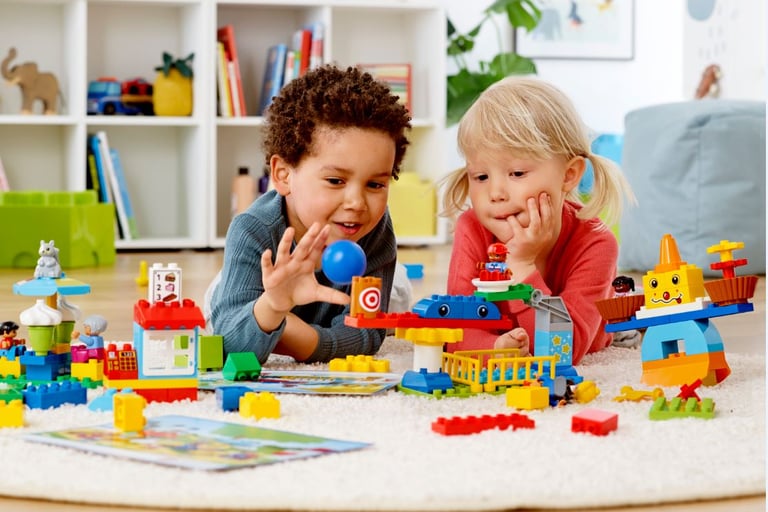

2. For Elementary School (Ages 6-10): LEGO® Education SPIKE™ Essential
How it helps: SPIKE Essential takes learning to the next level by combining the familiar LEGO bricks with simple hardware and an intuitive, block-based coding interface. For a student with sensory needs, the structured, step-by-step building process can be very calming and organizing. The cause-and-effect of seeing their code make a creation light up or move provides clear, predictable visual feedback, which helps reduce anxiety and build confidence.
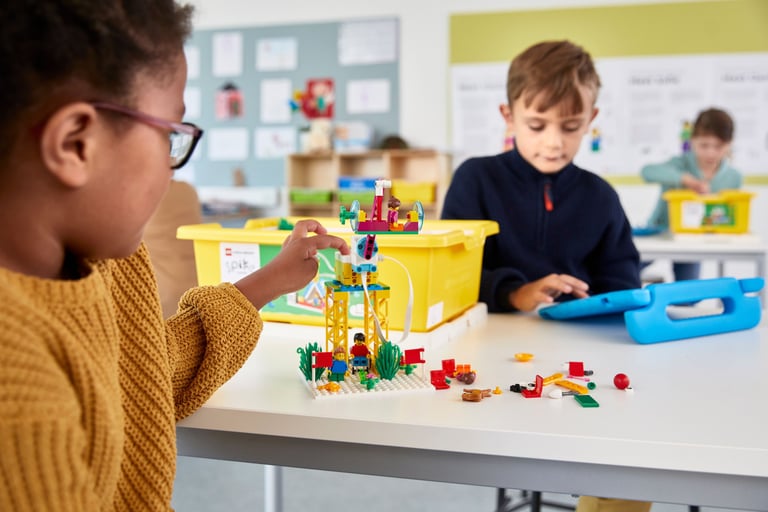

3. For Middle & High School (Ages 10-14): LEGO® Education SPIKE™ Prime
How it helps: SPIKE Prime offers more advanced building and programming challenges. For students who need focused, complex tasks to help them regulate, the intricate builds in this kit provide a long-lasting proprioceptive and tactile activity. The ability to use both block-based and text-based (Python) coding allows students to engage their minds in a highly structured and logical way, which can be very organizing for a brain struggling with sensory "traffic jams."
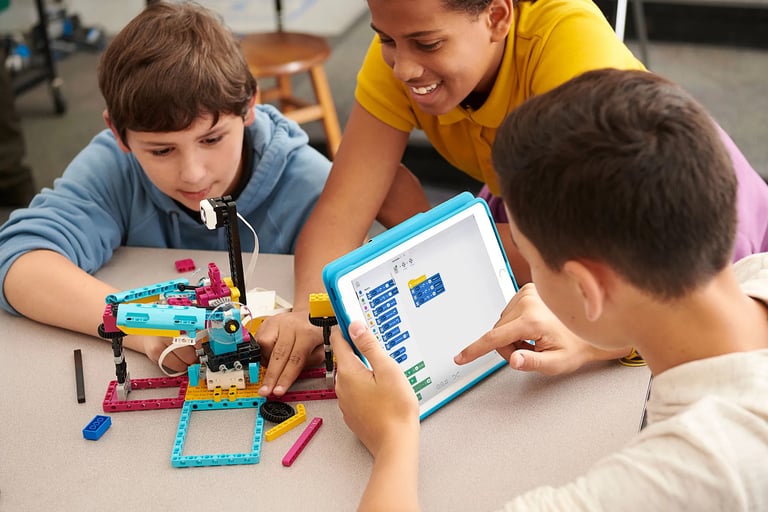

Our Partner Platforms: A Diverse Sensory Toolkit
As partners with the world's leading educational technology brands in Oman, we offer a diverse range of tools that complement and expand upon these principles.
For Tactile & Proprioceptive Input (Makeblock): The process of building with Makeblock kits like the mBot2 is a brilliant sensory activity. The durable metal parts provide a different, satisfying tactile feedback from plastic bricks, and the act of using a real screwdriver and tightening bolts offers purposeful "heavy work" for the hands, which is very organizing for a child with SPD.
For Vestibular & Visual Input (Sphero): For the child who needs to move, programming a Sphero BOLT+ to navigate a maze across the floor provides a goal-oriented reason to get up and walk around, satisfying vestibular needs. For a child who is easily overwhelmed, the smooth, predictable motion of the ball can be a very calming visual tracking activity, helping them focus their attention.
For Multi-Sensory Engagement (STEMpedia): Tools like the Quarky board are multi-sensory powerhouses. A student can program its built-in LEDs to display calming colors (visual), make it play specific tones (auditory), and code motors to provide gentle vibrations (tactile). This allows for the creation of customized sensory tools that a child can control, giving them a sense of agency over their environment.
How We at STEAM Leaders Support All Students
At STEAM Leaders Oman, we believe that every child deserves the opportunity to learn in an environment that honors their unique needs. Our philosophy is rooted in the understanding that there is no one-size-fits-all approach to education.
We partner with schools to help create truly inclusive STEM labs and makerspaces. We don’t just supply equipment—we offer a holistic solution. Our team helps you choose the right tools—like those mentioned above—that teach critical STEM skills and provide essential sensory support. Our professional development courses equip teachers with the strategies and confidence needed to build a classroom where every student, regardless of their sensory profile, feels safe, regulated, and ready to reach their full potential.
Click the image to explore the Lego Education STEAM Park in our store.
Click the image to explore the Lego Education SPIKE Essential in our store.
Click the image to explore the Lego Education SPIKE Prime in our store.
Click the image to explore the Makeblock mBot2 in our store.
Click the image to explore the Sphero BOLT+ in our store.
Click the image to explore the Quarky in our store.
